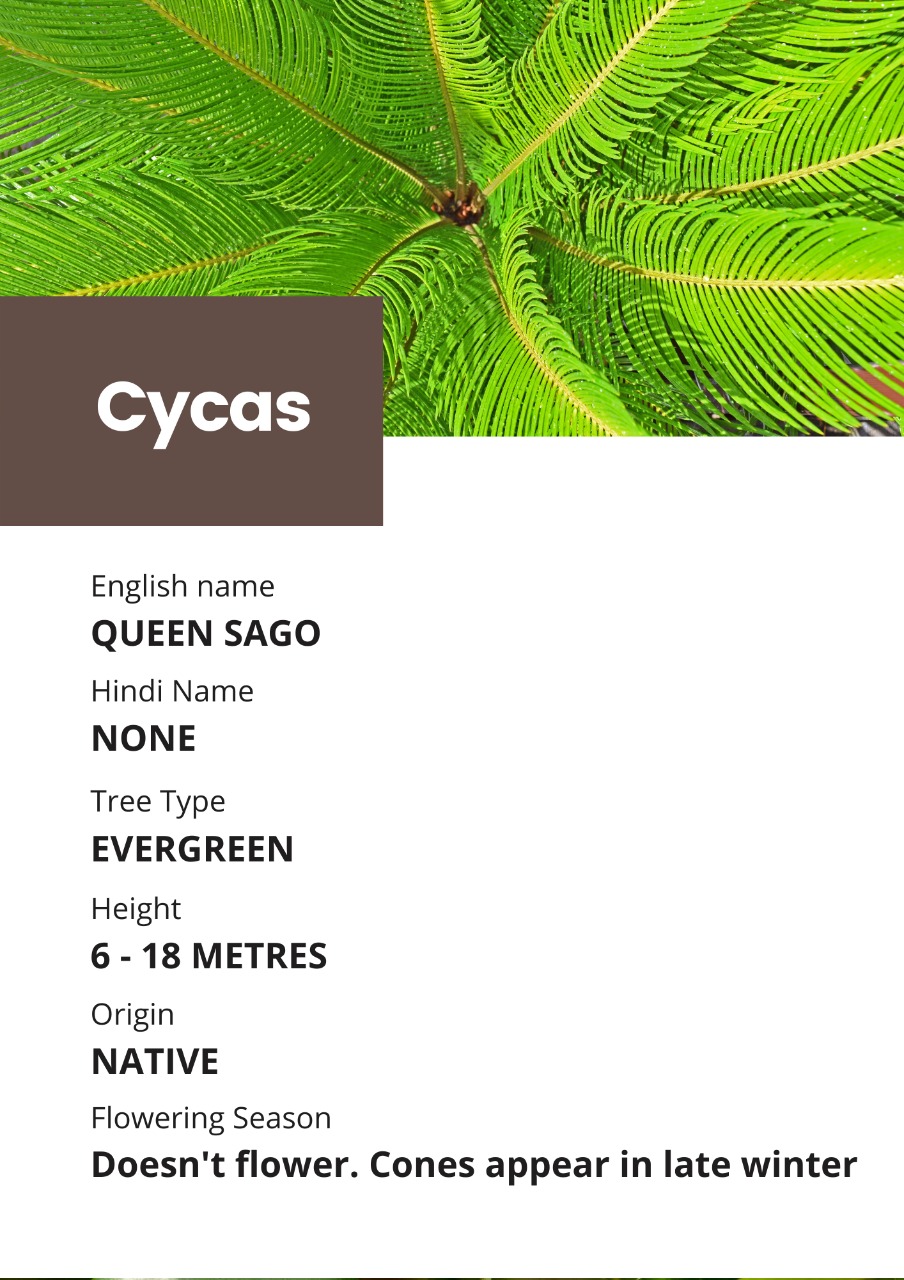
QUEEN SAGO
Cycas:
Family: Cycas is a part of the Cycad family.
Common Name: It is commonly known as Queen Sago.
Flowering period: It does not flower, cones appear in late winter.
Habitat: Cycas is native to India and is mostly found in colder climates.
Uses: The stems and seeds of these plants are very rich in starch. In India, the stem of a species of Cycas, Cycas circinalis, is used to make sago flour. Nowadays, these plants are mostly used as ornamental plants. . The soft young leaves of Cycas are also used as a vegetable in some parts of the world. The terminal buds of Cycas circinalis are used to treat ulcerated wounds and swollen glands.
Key features: Most of these species are shrub-sized, whereas some of them can grow up to 6-18m tall at maturity. These trees have an unbranched thick and scaly central stem They have a large, terminal rosette of compound leaves, i.e, they are composed of numerous small leaflets. Cycas produces coralloid (coral like) roots. These roots grow near the top of the soil and participate in a symbiotic relationship with cyanobacteria. In this relationship, the bacteria fix atmospheric nitrogen and convert it into a form that can be absorbed by the plant. In return, the plant provides shelter and nutrients to the bacteria. This is a dioecious tree, i.e, male and female plants are different.